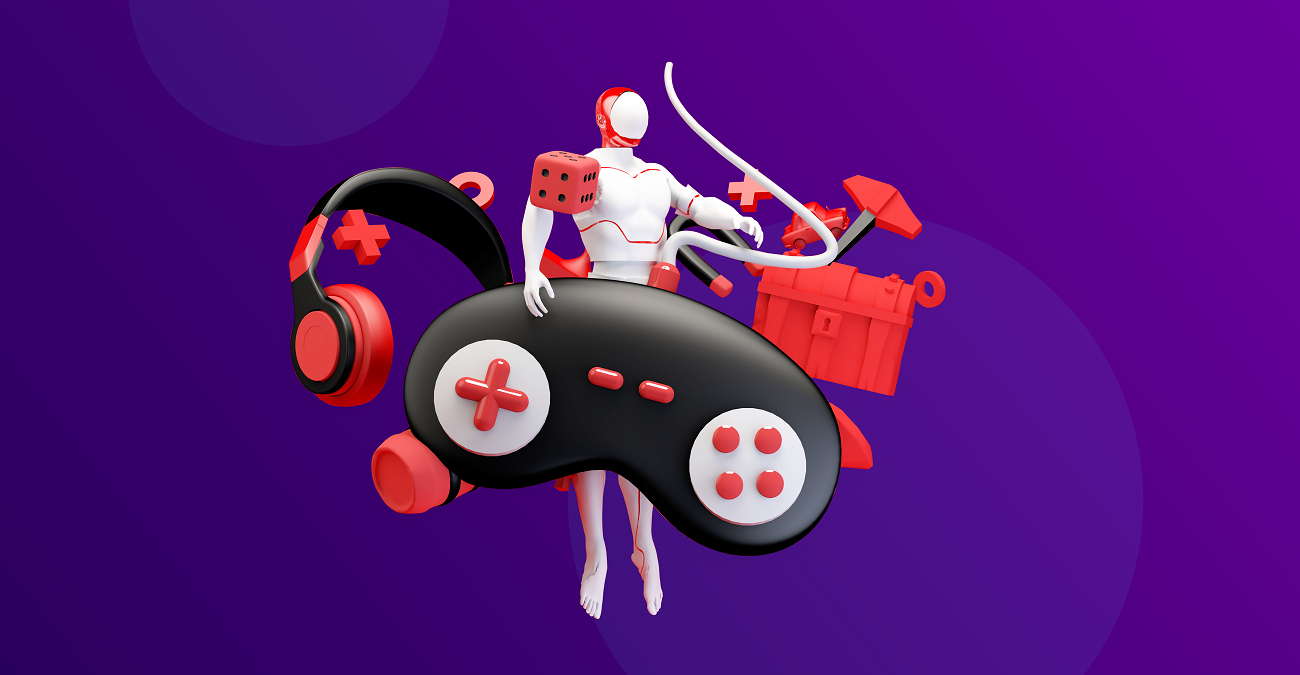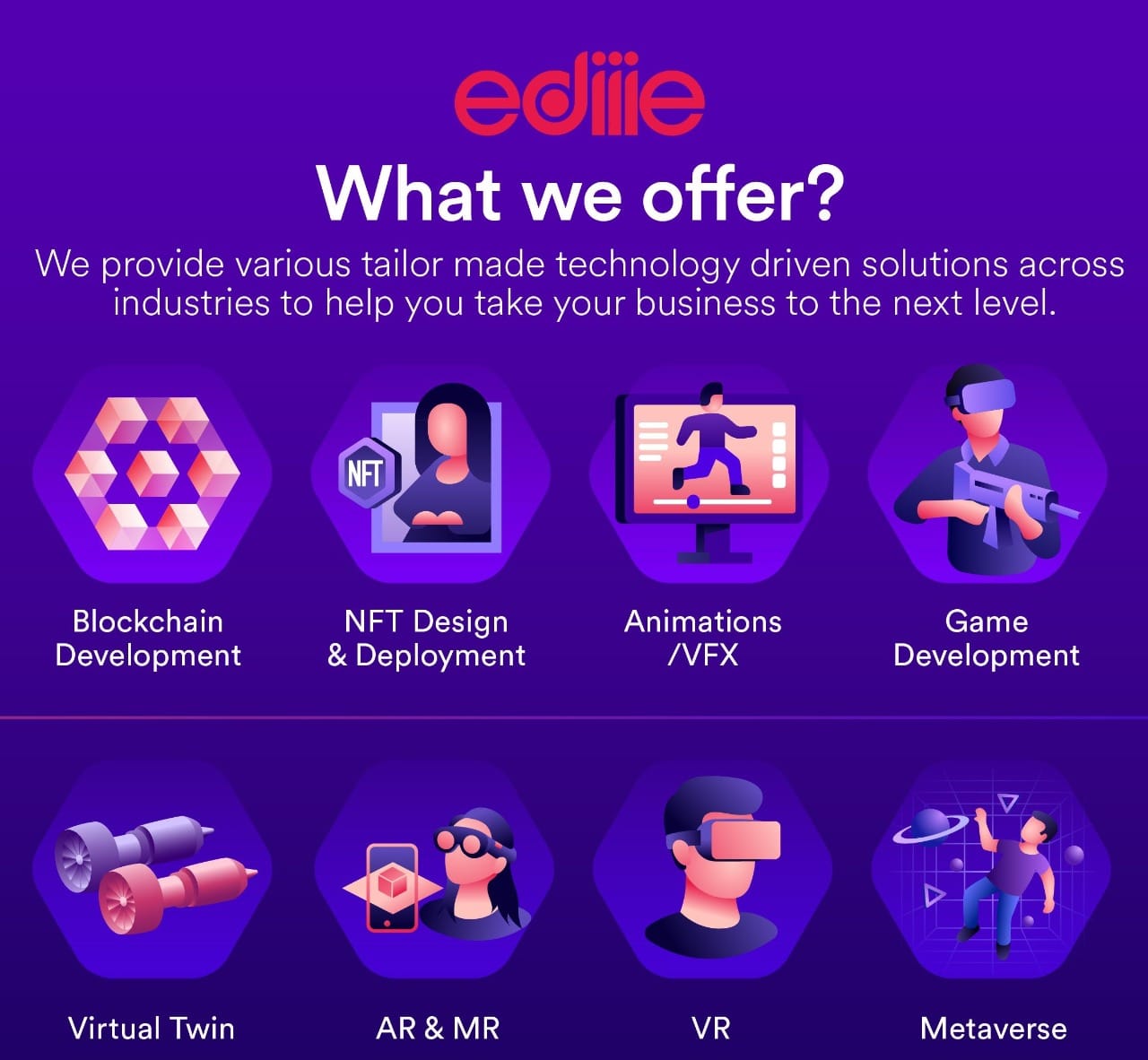Artificial Intelligence in Gaming: AI Tools for Game Development
During their early years, video games were used to getting a bad rap in society, seeing how they were a hit amongst young students and adults. Well, the times have changed, and even the teachers and parents who used to make up the bulk of naysayers now recognize its importance.
They have been incorporated into education, healthcare, and physical activities and also offer many lucrative options to consumers and developers today. And the rise of generative AI, especially for AI in gaming, has only elevated the pedestal video games now enjoy for everyone in the industry.
Why Artificial Intelligence in Gaming?
Many essential technologies have either had their roots or cut their teeth in the gaming industry. From processors to software changes and proprietary digital tech – they all have had their day in the sun when they were first utilized in gaming.
Why when video games were all the rage in the early 2000s, many pieces of hardware used to double up as marketing space for upcoming games and releases. This is a pattern that we even see today, with tech companies like Nvidia or AMD releasing new cards and drivers in conjunction with hot gaming titles on the scene.
Artificial intelligence, given the recent gaming trends, is not an outlier to this fact. There have been many instances of AI being used to develop games or implemented in them in some way or the other. And they really do have had a sizeable impact on how video games are developed over the years. Including recent tools that enable the use of generative AI in gaming.
Inside the Pipeline: Advantages of AI in Gaming
The gaming industry is no novice when it comes to using AI for 3D game development and practices. It has had a profound impact on the landscape and its implications are vital for player experiences, content creation and game design.
Let’s take a look at some key areas where AI in gaming shines and the advantages it brings:
1. NPCs and Enemies:
Nearly all games have different sets of characters that exist for the in-game world and are integral to either the story or the settings. Some are enemies, while the others are called ‘Non-Player Characters’ or NPCs.
They make up for the bulk of interactions the player has and are arguably the most crucial aspect when it comes to gaming.
AI in gaming integrates intelligent algorithms that change how the NPCs and enemies behave throughout the game. Utilizing the system’s computing power, these algorithms help make these characters appear realistic to the player and pose new challenges.
This can be implemented for platforms like PCs, consoles, and even mobile game development. Where the NPCs can react and learn from the player’s actions and make for some unpredictable gameplay.
2. Natural Language Processing:
Traditionally, the way games are made usually involves a set number of characters and the lines that are spoken by them. From indie games to AAA titles, they all have a certain number of lines that have been written for various characters.
Plus, a limited amount of audio recordings for those lines in case they need to be said in the game instead of just appearing on the screen.
Natural Language Processing (NLP) refers to how game developers are exploring the use of AI in gaming as chatbots and systems that can recognize voices. The gaming industry has already seen a glimpse of this in a full-fledged mod for Elder Scrolls Skyrim that utilizes AI writing tools.
Further implementations should make for enhanced storytelling moments where players get the chance to have countless unique interactions based on what they type or speak.
3. Pathfinding and Difficulty:
As seen from shooters to arcade fighters to some of the best Metaverse games in the industry, difficulty settings are a universal aspect of video games. It’s when the going gets tough for the player, owing to several factors that are slowly turned up in relation to the genre of the game.
Pathfinding, on the other hand, refers to how NPCs and enemies in a game react to the environment and navigate through them, especially in ways that are either helpful or challenging to the user.
AI in gaming is a boon to both of these attributes in video games. Using artificial intelligence will allow developers to build a feature that automatically adjusts the difficulty.
So that based on the player’s performance, the game becomes challenging or more manageable so that there’s ample engagement without room for frustration. Similarly, it can enable game characters to navigate complex scenarios in the game perfectly – as evidenced in games like The Last of Us and Arkham Knight.
4. Realistic Graphics:
Realistic graphics in video games is one that many titles will gladly benefit from. Whether it’s a AAA title meant for PC gaming or some of the top AR games in the industry, AI in gaming can also help ramp up the graphics and level of fidelity offered by the title to the gaming community.
Techniques such as machine learning and the use of neural networks can create some excellent graphical offerings.
For instance, NVIDIA’s DLSS3 and Frame-Generation technology is an excellent example of AI development in gaming. Offered to users having the latest RTX 40 series cards, it enables games to provide higher and smoother frame rates – almost twice in some cases.
It does so by utilizing AI and onboard hardware capabilities where it’s not only just upscaling textures but also inserting pseudo-frames where possible to provide a sharper image at high frame rates.
These are some of the important benefits of deploying AI in gaming, and there are many more in the pipeline should one only just explore. It possesses the capability to enhance every aspect of a player’s gaming experience. From multiplayer to anti-cheating measures, storytelling to personalized moments, and many more.
Generative AI: Future of AI in Gaming?

Traditionally, AI has always relied on a specific set of algorithms, logic, and codes written by developers to work or perform any set of tasks. It’s called ‘rule-based’ AI because of this reason, as it has typically relied on predefined rules when it comes to processing the data it is presented with.
In many cases of AI in gaming, this has been a running theme from among its various applications, even for NFT game development or blockchain gaming.
Generative AI, alternatively, is artificial intelligence that has training models and pattern recognition under its hood. It also relies on neural networks and deep learning so that it can produce data accordingly.
However, true to its name, this sort of AI is good at ‘generating’ new content that is novel and unique. This poses no threat or disadvantage to AI in gaming but, in fact, can be used by developers in game development during its various stages.
AI Tools for Game Development & Important Stages
Creating a game is similar to putting together a jigsaw, with each component representing a distinct phase in creating a game that others will like playing. These phases may alter somewhat between games, similar to how various cake recipes have specific steps.
Plus, the sequence of the stages may also change based on how the developers intend to build the game.
These steps involve planning how the game will appear and how it will be played. Further, it includes creating the actual game pieces, testing to detect and correct any problems, and eventually publishing the game for people to enjoy.
Here are some essential tools that enable developers to use AI development in gaming:
For Generating Assets.
1. Scenario:
Scenario.com: is a free tool you can use for developing your game, especially if you’re looking for something to help with generating assets. Scenario uses AI in gaming to generate various assets for your game, such as textures, the concept art that you may use for making models, and also some assets for the environment.
2. Prometheanai:
Another AI tool that you can rely on for game development, especially if you’re into VR in gaming, is the Prometheanai app. It’s freemium, so eventually, you’ll have to pay to use this. For now, you can take a crack at it to help you generate all sorts of virtual worlds that you can use for your game.
In-game Animations.
3. Plask and RadicalMotion:
AI in gaming also offers developers the opportunity to generate 3D animations for their video game projects from scratch. More importantly, it can also study any video that you present to them to make in-game animations similar to something you’d get from having actors work with motion capture suits.
Both the tools Plask and RadicalMotion are suited for this, with Plask having paid, more premium features.
Ideation.
4. Ludo.ai:
Now, it won’t help you with pointers on game marketing strategies; that’s what our team at EDIIIE’s there to help you with. However, AI in gaming tools such as Ludo.ai can help you quickly come up with new ideas to implement in your game, what mechanics it can include, etc.
You can sign up for Ludo.ai for free, but there’s also a paid version of the same to help designers and developers through their ideation and research processes.
Creating new Textures.
5. DreamTextures and Stable Diffusion:
Quite a mouthful, we know, but these are some of the leading tools used in AI in gaming that can help you with generating textures. You may use these textures for various settings in your game environment, whether for background objects or for NPCs, interactable tools and objects, etc.
And you can achieve all this by using tools like DreamTextures and Stable Diffusion, which are free and work based on simple text commands/prompts.
These are some of the AI tools for game development that developers are using in helping their work process through various stages. It’s suited for multiple types of games and genres, from Multiplayer to Story-driven RPGs, from action shooters to blockchain game development, and more.
You can check out more such tools for AI in gaming over here on GitHub to pick and choose from and power through your game development journey.
Because as we’ve seen here at EDIIIE, effective planning and collaboration can help you navigate the different stages of game development successfully. And in building a high-quality game that resonates with the players through AI in gaming.






